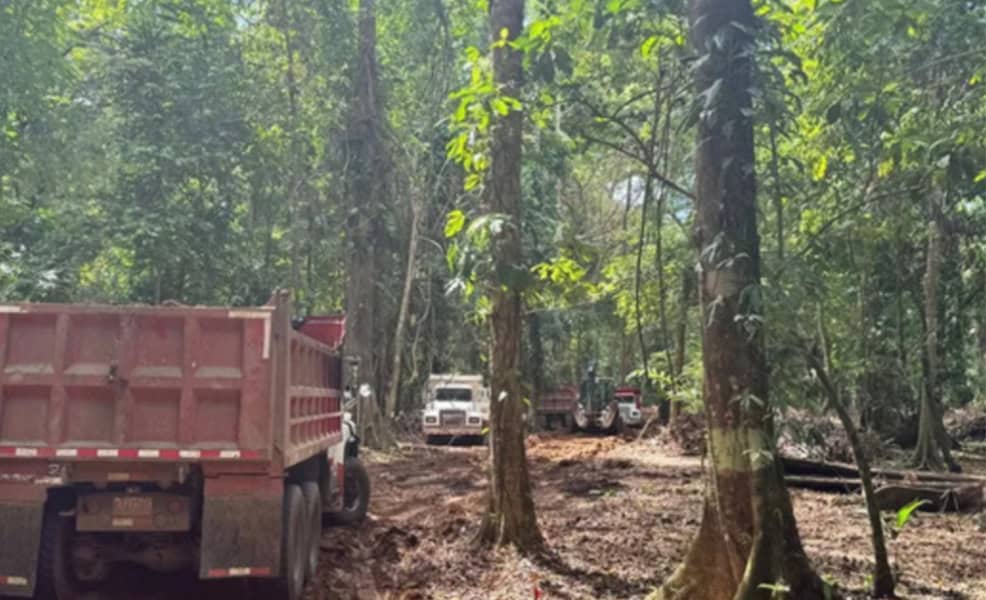Three expert reports conducted by the Judicial Investigation Agency (OIJ) have confirmed the presence of forests and wetlands on farms owned by businessman Allan Pacheco Dent. These farms, located in Manzanillo, are under investigation for alleged irregularities in the granting of logging permits.
The Environmental Agrarian Prosecutor’s Office requested these reports, which were conducted on two properties—one covering 12 hectares (ha) and the other 3 hectares (ha). Both properties are situated between Playa Grande and Punta Uva in the South Caribbean and are registered under the legal entity Playa Manzanillo S.A., represented by Pacheco Dent.
The first report was initiated after neighbors and environmental groups from the southern Caribbean raised concerns when they observed two trucks, each carrying a large amount of logs, leaving the vicinity of the Gandoca-Manzanillo National Wildlife Refuge. The report concluded that “the sampled sector of the denounced property corresponds to a forest, with the characteristics established in the definition of Article 3 of the Forestry Law.”
A second report, issued on July 3, examined additional areas adjacent to those in the initial report. It described the area as “heavily deforested,” with visible fill material “especially in areas that appear to be roads,” and noted that other sections were “completely cleared due to the passage of heavy machinery.”
The third report aimed to determine whether the properties were within the refuge boundaries and whether the road was within the Maritime Terrestrial Zone. The findings revealed that the area “falls within the scope of Law 9223, which mandates a study to identify and delineate forest-wetland areas to prevent their degradation.”
During a press conference held in Limón, President Rodrigo Chaves defended Pacheco Dent.
“They arrested a private businessman, took him away, handed him over to the judge, and the judge said, ‘There is no crime here, what are you talking about?’” He also emphasized that “not a single tree was cut in the maritime-terrestrial area,” and insisted there was “no environmental damage.”






